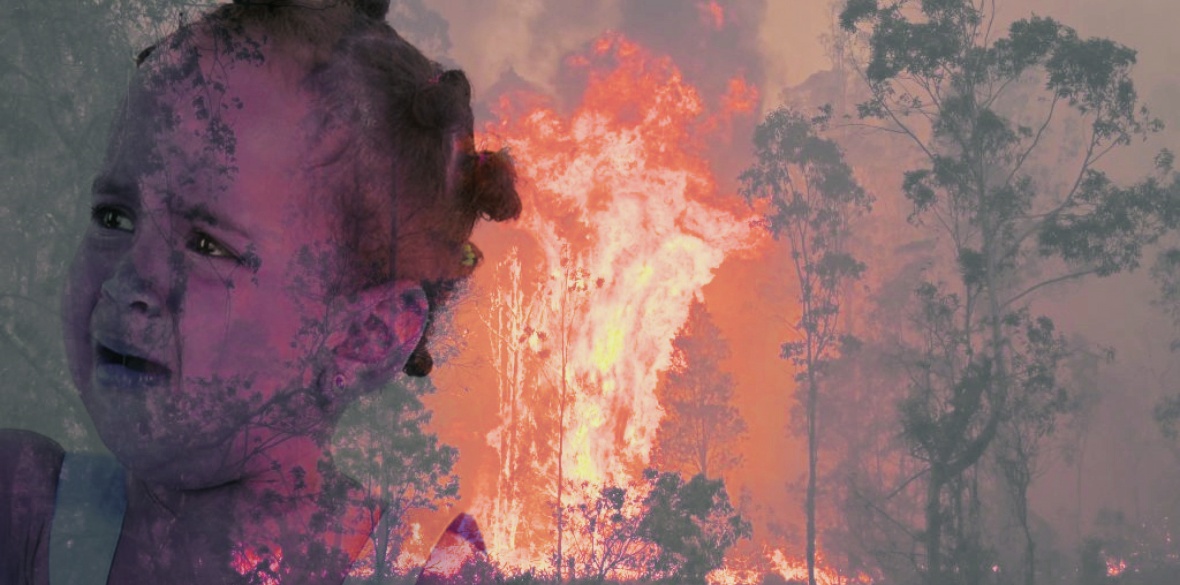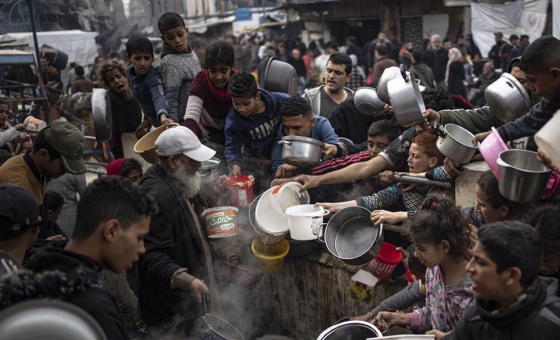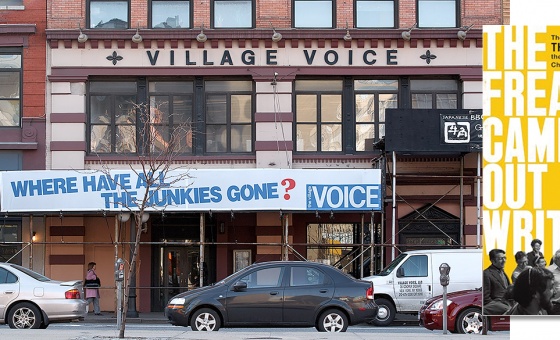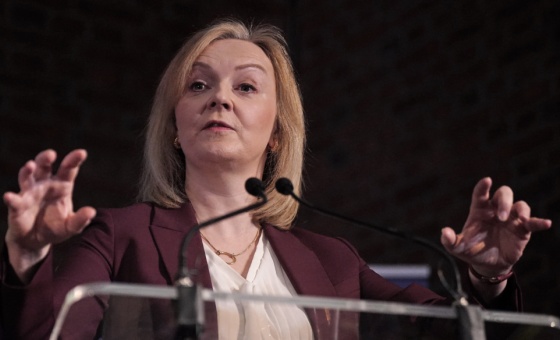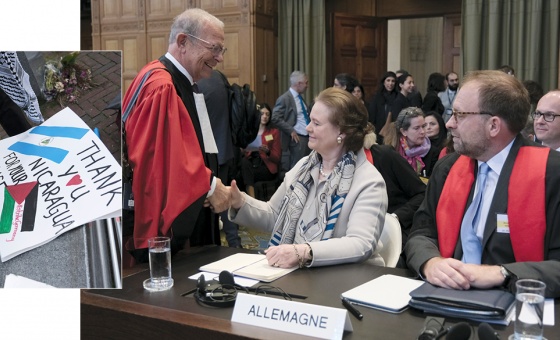This is the last article you can read this month
You can read more article this month
You can read more articles this month
Sorry your limit is up for this month
Reset on:
Please help support the Morning Star by subscribing here
EARLIER this month, the so-called “Doomsday Clock” hit the headlines when it reportedly ticked forward to 100 seconds to midnight.
The clock, which is run by the Bulletin of Atomic Scientists (BAS) — a body made up of 13 Nobel laureates and elders — is a symbol representing the likelihood of a man-made, Earth-ending catastrophe.
Midnight, then, symbolises the end of the world and the latest development places humanity closer to its own demise than it has ever been before; the hand previously sat at two minutes to midnight at the end of 2018, having jumped by 15 minutes since 1991.
Multiple factors are used to discern the likelihood of a global catastrophe, but BAS indicates that the key reasons are based on nuclear generation, cyber-based causes and climate change.
The latter has been a central concern for scientists and activists for decades. Now, it has been propelled to the forefront of many political and social agendas, with voices like David Attenborough, Greta Thunberg and the activist group Extinction Rebellion bringing the issue into more mainstream dialogues.
Despite this, the sheer scale of climate catastrophe — and what it means for the future of the Earth and its people — is still difficult to comprehend.
The topic of environmental displacement, and the waves of potential migration which may be caused by global warming’s impact on the world as we know it, has also started creeping into discourse on the topic, though for many, the sheer scale of the issue is incomprehensible.
Numbers in the millions, and occasionally the billions, have been prophesied, as people continue to be forced from their homes, towns and countries by floods, droughts and storms.
To many, this scenario sounds like a scene from a post-apocalyptic film, dreamt up by a Hollywood producer. But, if the Earth’s global temperature continues to rise, it will become a reality.
According to Nasa, the planet’s average surface temperature has risen by 0.9°C since the turn of the century.
Most of this has occurred over the last 35 years and is attributed to rises in man-made emissions. If the Earth’s global temperature rises by another degree, Nasa suggests this will have catastrophic effects on weather patterns, sea levels and the frequency and scale of natural disasters.
What’s more, we are already starting to see cases of environmental displacement happening around the world. In Bangladesh (one of the most susceptible countries to the effects of climate change) low-lying land and a landscape made up of sprawling rivers means that sea-level rise has led to river-bank erosion, flash-floods, and salt-water intrusion.
All are bad for residents and it is poorer families and communities that suffer the most.
Low-income families (particularly those living in fishing communities) are impacted three-fold. As they tend to live closest to the river, very often in huts or in slums right on the edge of the bank, erosion puts their homes at the greatest risk of being submerged; increased saline levels in rivers as a result of rising sea levels also causes freshwater fish to die, resulting in the loss of livelihood and food sources for fishing communities; and floods, which are highly destructive to many communities in Bangladesh, bring the most irreversible damage to poorer communities, who cannot afford to rebuild or travel to a safer area of the country.
Sahela Begum lived with her four daughters on the banks of the Padma River in a town called Naria, just off the west coast of Bangladesh. One night in August, the riverbank crumbled and she watched as her home was carried downstream.
“I felt I was having a stroke and might die,” Begum told the National Geographic. “When we lost the house, we ran out of options.”
Now she lives with her children in the overcrowded city of Dhaka where she and her young sons work morning to night, seven days a week to try and make the rent.
Just across the Pacific, and huge swathes of Australia have been permanently destroyed by the worst bushfires the country has ever known.
A three-month drought, exacerbated by rising global temperatures, has led to fires ravaging 12.5 million acres of land.
Billions of animals have been killed, injured and had their habitats destroyed by the fires, and tens of thousands of people have already been displaced.
According to research conducted by the EU, every year since 2008 roughly 26.4 million people have been displaced by environmental factors, be that extreme or abnormal weather patterns or natural disasters.
Many migrate internally, moving to areas of their home countries which are still safe. However, there are cases in which entire countries — like the Pacific islands Nahlapenlohd and Kepidau en Pehleng which have literally been swallowed by rising sea levels — have become uninhabitable, forcing residents to flee them entirely.
In a landmark decision this month, the UN declared that those who had been forced to leave their home countries because of environmental factors should no longer be sent back.
Currently, “climate refugees” are not recognised by the global refugee convention, which protects those fleeing from persecution by offering them the right to claim asylum in any safe country.
This is tied into issues with the idea of “persecution.” To claim their right to refuge, a person must prove they are being persecuted by an individual, group or government.
This could be because of their gender, race, religion, sexuality or political belief.
“Climate refugees” are problematic because they are unable to be placed under this category; the environment does not persecute people and is arbitrary in its destruction of land and lives.
While the UN’s decision comes as good news and promises the hope of either a reworking of the current convention or the creation of new protective laws for displaced people, the movement of people is only a short-term solution and one that brings with it its own set of issues.
This scale of mass-migration — if it reaches the numbers predicted by researchers — is unprecedented. If the residents of entire countries are forced to migrate, this could risk overpopulation in host countries, an issue which would likely cause increased emissions and even speed up environmental problems.
While it is fundamental that laws are implemented to help protect individuals who are forcibly displaced by climate change, we must ask why this is necessary in the first place.
Expanding asylum laws to protect vulnerable people is essential, but we must consider how, in the short amount of time which is left to do so, we can prevent the rise of the climate refugee altogether.
Luna Williams is the political correspondent for the Immigration Advice Service an organisation that offers legal aid to asylum-seekers and refugees – www.iasservices.org.uk.

